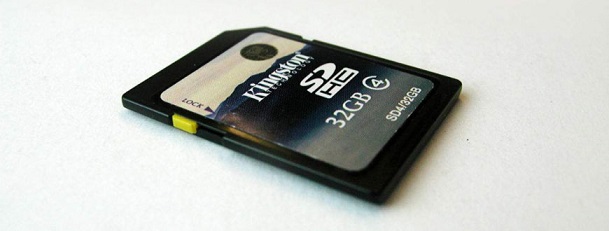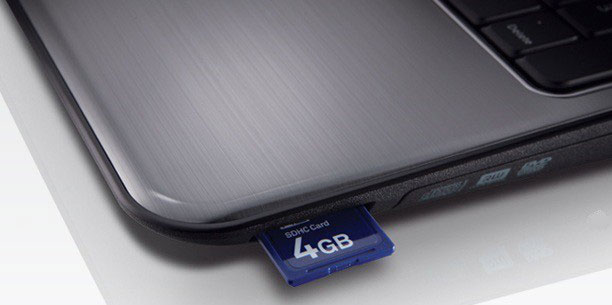Memory Card Recovery Free Download - Recover Lost Data
Quick Navigation:
- Recommended recovery software: Deep Data Recovery
- Step-by-step guide for how to use Deep Data Recovery to recover data on memory card
- Step 1. Download & Install
- Step 2. Connect Memory Card to Computer
- Step 3. Select Category
- Step 4. Select the Memory Card to Scan
- Step 5. Select files to recover
- What if you get an error message saying you have corrupt data? What Next?
- Some other common problems for memory card which you might encounter and the steps to be taken

Expandable data storage devices or SD Cards have such a vital role to play in our everyday lives. From smartphones to DSLRs, they store all the memories of our lives and there's nothing like losing all this valuable data all for a memory card. But it happens all the time that we want to recover data from memory card after we lost or delete data on a memory card accidently. How to perform memory card recovery? Any tutorial? OK, let's get started to learn how to do memory card data recovery.
Recommended recovery software: Deep Data Recovery
Deep Data Recovery, I would say, is the best data retrieval solution to recover deleted data and lost files from memory cards.Whether you have lost the data from permanent deletion, formatting the memory card, corrupted memory card, virus attack or from any other unknown reasons, it proves to be a secure and effective data recovery solution for your memory card. It supports all file types like photos, audio, video, documents etc. and supports all kinds of SD cards, hard drives, USB flash devices and other storage media. It offers free data recovery of up to 200MB of data, of over 100 file types and with a facility to preview your data just to make sure you restore only the data you require.
Your Powerful & Effective Memory Card Recovery Software
- It can recover a wide range of file formats such as images, videos, audio, documents, archived and many other file types.
- It comes with two effective scan modes which are quick and deep to look for the lost files. Its deep scan mode is most powerful and gives desired results.
- Before retrieving back lost files, it also allows users to preview all the lost or deleted files and can also give the option to recover desired files.
- No matter how you lost your files, it can recover files for a wide range of data loss situation. It can also recover data from various storage devices such as memory card, digital camera, USB, external hard drive, MP3/MP4 player, Pen or Zip Drive and many more.
Step-by-step guide for how to use Deep Data Recovery to recover data on memory card
Step 1. Download & Install
Download the best memory card recovery software and install it in your system by following the built-in instructions. Upon successful installation, you should see the below start page appear on your screen. Deep Data Recovery is fully compatible with Windows PC. There will be no problem for the incompatibility issue at all.
Step 2. Connect Memory Card to Computer
Whether the memory card you want to recover files from is for phone, tablets or camera, you need to connect it with your computer, letting the computer detect it as an external hard drive. If it is in a phone or tablet, just connect the device with computer via a USB cable and enable the USB debugging as well. If it is for a camera, you need to insert it into a card reader, then connect the card reader with your computer.

Step 3. Select Category
Of all the categories available like email, document, photos, video etc., select the type of file or data you want to recover. All the categories or types of data are selected by default. If you want to recover, say, a document, click on the already checked "All file types" option to uncheck all the categories and then select documents only. Next, click on the Next button to begin scanning the device.

Step 4. Select the Memory Card to Scan
Now, of all the folder or partition, external hard drive choices available, select the memory card you want to look for the missing or lost file in and to perform memory card recovery. Next, you will see a Scan button in the top right corner of the screen. Click on it to start scanning for the deleted files.

Step 5. Select files to recover
Of the retrieved output files list in the result window, you can recover the lost or deleted files from the memory card. Note that by using Deep Data Recovery you also have the facility to preview the files before you save them just so you may save only the files you intend to recover. The Recover button on the screen saves the selected files to your system.

About Deep Scan
If in case you are not satisfied with the list of files retrieved for the memory card or if the files you were expecting retrieval of aren't found in the scan or if the scan fetches an empty list, you can go for the deep scan option to search for the lost files. It is also to be noted that the deep scan may take longer to complete compared to the traditional scan but it is more efficient.
What if you get an error message saying you have corrupt data? What Next?
The first thing to do in such a scenario where you come across a corrupted SD Card or where the data in the storage device is corrupted is to take a backup of the data before doing anything else. You can still try the Deep Data Recovery to backup the data and its retrieval. Just follow the above steps and recover all data with just a few clicks.
Some other common problems for memory card which you might encounter and the steps to be taken
Sometimes, compatibility issues may cause a few devices to fail in detecting your SD Card. In such cases, first try using a different card reader and then try inserting the SD card into a few other devices.
It may also be the case that the memory card is not inserted properly. So, try removing and re-inserting the SD Card into the device and check again.
Sometimes, the SD card is read properly but you may encounter an empty SD card that used to contain all the crucial data. When you come across such an issue, simply go to the command prompt and type chkdsk followed by the letter assigned to the SD card by the computer. Then check if all of your data is back or not.
At times, the computer fails to recognize the SD card and so it is not able to assign it a drive letter. It gives you a warning to insert a disk into the drive upon insertion. If you ever come across such an issue, go to the system settings of the computer and try assigning it a drive letter and check if it works fine now.
If you are unable to copy the contents of your SD card despite the data of the card being visible, it means the device is write protected. To copy the data try switching the lock on the surface of the SD card and check if you are able to copy the data.
Sometimes, your computer might be able to detect the memory card but asks you to format the card in order to use it. Go to computer's Device Manager, click on Disk Drives and uninstall from the drives list the SD card. After restarting the computer it will again install the required drivers and try connecting again. Check for your data now.
Related Articles
- How to Recover Deleted Pictures from SD Card on Camera
- 3 Ways to Recover Chrome Browsing History
- 3 Ways to Recover Deleted Files in Windows 10
- Sony Xperia Data Recovery – Recover Data from Sony Xperia Internal Memory
If you're looking for Sony Xperia recovery software, you can free download the best Sony Xperia data recovery software to recover data from Sony Xperia internal memory even it broken screen, dead or broken. - How to Recover DCIM Folder from SD Card
Some people asked how to recover DCIM folder from SD card on Mac or Windows. Sometimes, the DCIM folder disappears without any notice. - How to Recover Deleted and Unsaved Notepad Text Files in Windows 10/7 [2021]
Whatever reason it is to lose the text files, the associated anxiety is the same. If you experience this, you can use an effective method in this article to recover deleted text files in Windows 7 and Windows 10.